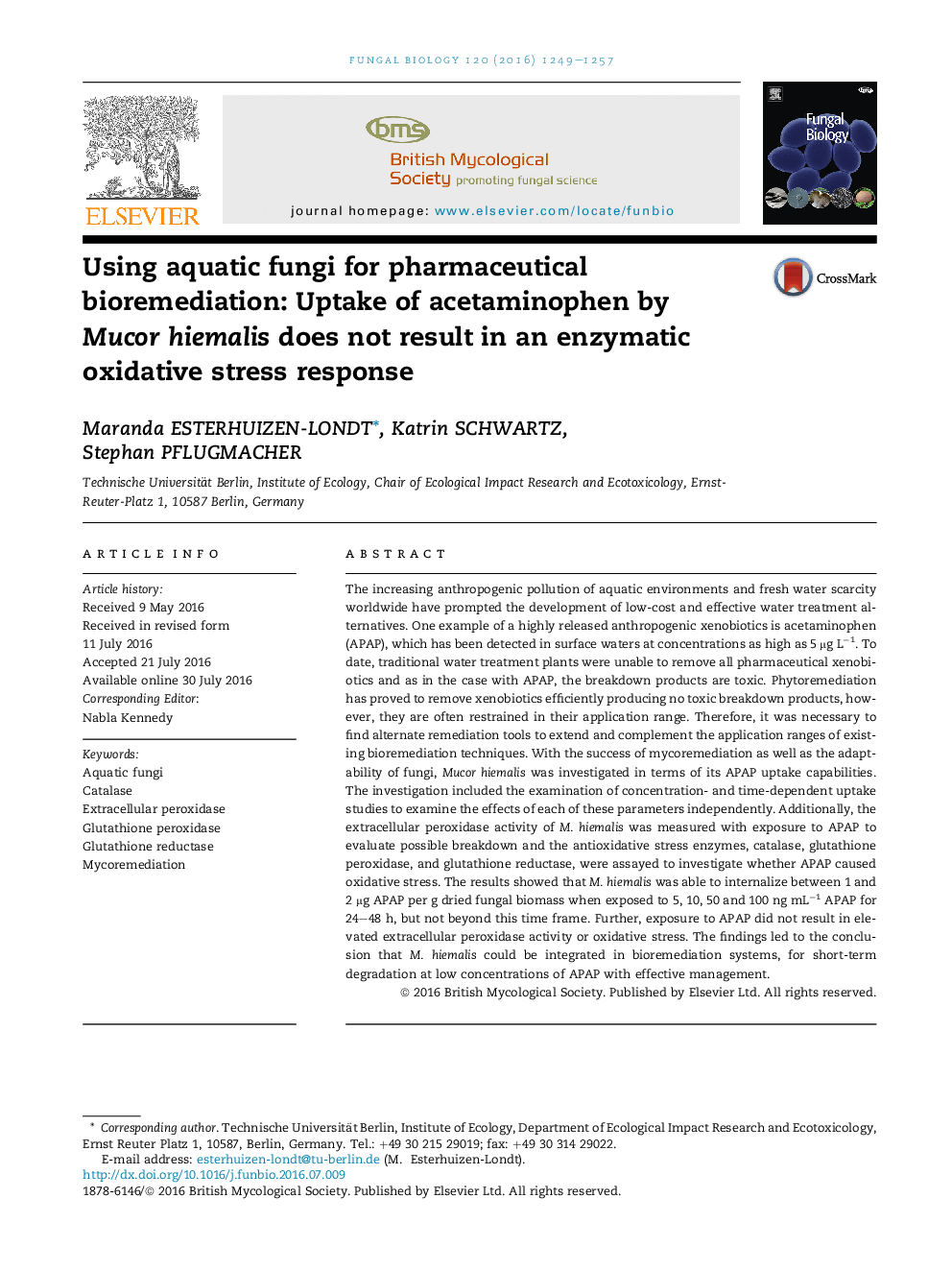| Article ID | Journal | Published Year | Pages | File Type |
|---|---|---|---|---|
| 4356737 | Fungal Biology | 2016 | 9 Pages |
•M. hiemalis takes up APAP at environmentally relevant concentrations for 24 h.•Intracellular APAP breakdown after internalization seems plausible.•APAP exposure does not induce oxidative stress in M. hiemalis.•No evidence of extracellular breakdown of APAP by peroxidases.
The increasing anthropogenic pollution of aquatic environments and fresh water scarcity worldwide have prompted the development of low-cost and effective water treatment alternatives. One example of a highly released anthropogenic xenobiotics is acetaminophen (APAP), which has been detected in surface waters at concentrations as high as 5 μg L−1. To date, traditional water treatment plants were unable to remove all pharmaceutical xenobiotics and as in the case with APAP, the breakdown products are toxic. Phytoremediation has proved to remove xenobiotics efficiently producing no toxic breakdown products, however, they are often restrained in their application range. Therefore, it was necessary to find alternate remediation tools to extend and complement the application ranges of existing bioremediation techniques. With the success of mycoremediation as well as the adaptability of fungi, Mucor hiemalis was investigated in terms of its APAP uptake capabilities. The investigation included the examination of concentration- and time-dependent uptake studies to examine the effects of each of these parameters independently. Additionally, the extracellular peroxidase activity of M. hiemalis was measured with exposure to APAP to evaluate possible breakdown and the antioxidative stress enzymes, catalase, glutathione peroxidase, and glutathione reductase, were assayed to investigate whether APAP caused oxidative stress. The results showed that M. hiemalis was able to internalize between 1 and 2 μg APAP per g dried fungal biomass when exposed to 5, 10, 50 and 100 ng mL−1 APAP for 24–48 h, but not beyond this time frame. Further, exposure to APAP did not result in elevated extracellular peroxidase activity or oxidative stress. The findings led to the conclusion that M. hiemalis could be integrated in bioremediation systems, for short-term degradation at low concentrations of APAP with effective management.
